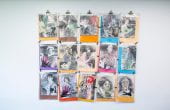Last week I welcomed colleagues and guests to an event on the creative industries organised by Goldsmiths’ Institute for Creative and Cultural Entrepreneurship (ICCE) and co-hosted by the Policy and Evidence Centre (PEC).

Creative Industries Revisited set out to review the current state of the creative and cultural industries and the narratives and policies associated with them – two decades on from the government’s first ‘mapping’ exercise of the sector.
Dr Martin Smith – Visiting Fellow at ICCE – opened the event with a talk highlighting the variegated and complex nature of the UK’s creative industries, often misunderstood by government and investors. Martin argued that while we should celebrate the successes of these industries, we must also interrogate their weaknesses to ensure they can maintain their enviable position in the global creative economy.
A panel discussion between Martin and Hasan Bakhshi (Director of the PEC) and John Newbigin (Founder of Creative England) followed and brought further important points. Hasan spoke of the need for more independent and transparent research into exploitative practices across the creative industries, and John raised the worrying prospect of arts education being downgraded in our schools.
I was very pleased to see the issue of lack of diversity being raised, particularly in the audience questions that followed the panel. This is the theme that stayed with me after the event and is a well-documented issue across the creative industries.
The fashion industry has been heavily criticised in recent years for a lack of diversity everywhere from the catwalk to the boardroom. Despite women making up the majority of the consumer base in this sector, leadership of fashion brands is overwhelmingly male, reflected in a stark gender pay gap in favour of men at UK brands including Karen Millen (53%) and ASOS (33%). And it’s clear that a lack of racial diversity in fashion leadership has contributed to the insensitive campaigns we’ve seen recently from some leading fashion houses.
An Arts Council England report released this year analysed the diversity of organisations funded by the Arts Council, covering disciplines including music, theatre, visual arts and museums. While improvements have been made in BAME representation in some parts of this sector, organisations are still falling short: among Major Partner Museums funded by Arts Council England, only 5% of staff are from BAME backgrounds. And disabled workers also make up just 5% of the workforce across funded organisations – when 20% of working-age adults have a disability.
Progress has certainly been made in some areas. Look to the work of Edward Enninful at British Vogue, who brought the diversity agenda to the fore with his first cover featuring Adwoa Aboah and names including Steve McQueen, Skepta and Sadiq Khan in an issue celebrating ‘Great Britain’. Last May’s issue featured Halima Aden, the first ever hijab-wearing model to appear on the magazine’s front pages.
What will the next 20 years hold for the UK’s creative and cultural industries? It’s clear there are difficult questions to ask: how can we make these industries more reflective of our diverse society? How can we bring more perspectives to the boardroom table? The fight for gender equality is crucial, but we must not ignore representation in terms of race, sexuality, disability and socio-economic background if we want to secure a future for these industries. As Martin Smith warned, the competitive advantage is ours to lose.
I know that Goldsmiths’ diverse and talented student body will go on to enjoy successful careers across the creative industries – I look forward to seeing them become part of this change.




